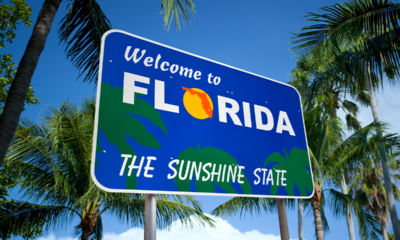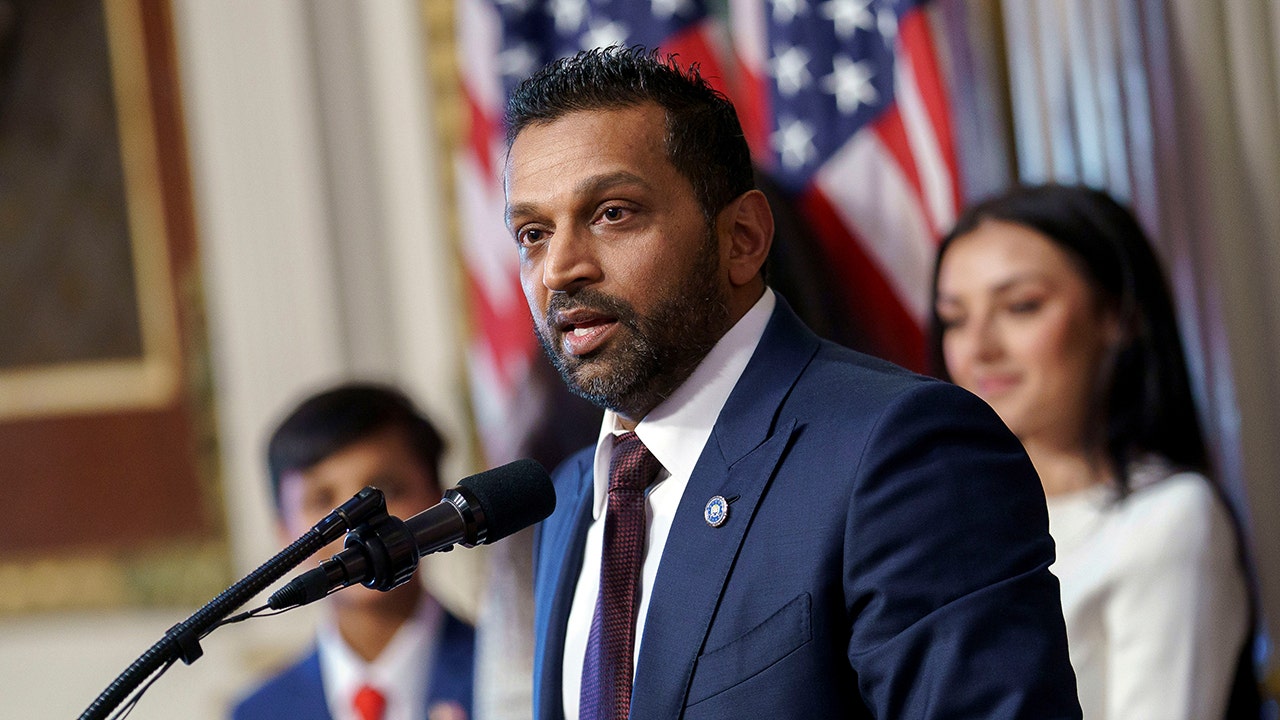Nicholas Lowry may be known for his natty plaid suits and handlebar mustache.
But on Tuesday, the popular appraiser on the PBS show “Antiques Roadshow” had added a quintessential Alaska accessory to his trademark uniform — a pair of Xtratuf boots.
Lowry was part of the PBS brigade in Anchorage for the filming of the show at the Alaska Native Heritage Center.
The day’s events will eventually be developed into three episodes of the program, now in its 45th season. The Anchorage episodes are expected to air sometime in early 2024, along with stops from four other cities, including Baton Rouge, Louisiana, and Akron, Ohio.
Lowry, who specializes in prints and posters, first traveled to Alaska in 2017 to visit a college friend in Anchorage. He purchased the boots and said he’s worn them around New York on stormy days. They were too big to fit in his bag, so he was only left with one option.
:quality(70)/cloudfront-us-east-1.images.arcpublishing.com/adn/PI57GM2OM5CRNGTRZQHVLJPSHA.JPG)
“If you wear them on the plane, people will know you’re going to Alaska,” he said. “In the Newark Airport, people were like ‘You’re wearing your Xtratufs, you must be going to Alaska.’ Yes I am.”
Lowry was joined by more than 60 other appraisers to review a total of around 6,000 items on Tuesday. PBS producers expected about 3,000 people to attend the filming. The appraisers, who are drawn from a rotating pool of around 136 currently touring with the production, are volunteers.
:quality(70)/cloudfront-us-east-1.images.arcpublishing.com/adn/FYZUUXWPMNCUTF2X2YLUJQ7EHU.JPG)
Guests stopped for an initial evaluation of their pieces and were assigned to one of two dozen specific categories, including collectibles, jewelry, pottery, furniture, arms/militia and multiple art classifications. The items being appraised ranged from garage sale finds to antique birthrights, from rare items to relatively common collectibles.
From there, they found tables of appraisers throughout the grounds and inside the building at the heritage center. Some lines were dozens of people long, while access to other tables moved relatively quickly. The longest line of the morning formed at the table for tribal art.
:quality(70)/cloudfront-us-east-1.images.arcpublishing.com/adn/ENCWEAEKBZF7VLE4MYWCK6JNIQ.jpg)
There, a woman waited patiently to have a pair of items appraised. One was an ornate mask she said was made in the Northwest Alaska village of Kivalina.
“It’s beautifully done,” said show appraiser Ted Trotta, “and it’s in great condition.”
:quality(70)/cloudfront-us-east-1.images.arcpublishing.com/adn/G2HIHFRKDZAT7NIS3AL47GMJIQ.JPG)
The other was a small ulu her grandfather had made, a piece she still uses it for skin sewing.
(Due to the potential value of some pieces, “Antiques Roadshow” asked media attending the event not to identify attendees by their last names.)
:quality(70)/cloudfront-us-east-1.images.arcpublishing.com/adn/O6V6ZXW6G5DKPHZGTZEW2BFDSQ.JPG)
The PBS contingent was sizable, including 20 staff and 50 traveling crew along with local volunteers and a number of local public media employees.
The appraisal process generally includes the item’s owner explaining what they know about the item. The appraiser often offers historical information and context before giving the owner an estimated value of the item. Reactions can range from elation to disappointment, and often, an appraisal of a personal item can lead to an accounting — not of established value, but of family history.
:quality(70)/cloudfront-us-east-1.images.arcpublishing.com/adn/3QHTA3INBRD3DIKEOAFZMMKIVE.JPG)
:quality(70)/cloudfront-us-east-1.images.arcpublishing.com/adn/SIR7UEJOFBETBB77TXJ7GJRKNM.JPG)
“Often (it’s) things they’re really emotionally attached to, so there are real human moments that will happen here today,” executive producer Marsha Bemko said. “I have roared with laughter with guests. I have sobbed and hugged and cried with guests. It is real people having real experiences that touch them.”
Sam Farrell, a senior producer for the show, was acting as a picker on Tuesday, determining which items among the thousands would be selected for a live on-air appraisal.
The process includes feedback from appraisers who see interesting pieces, which Farrell, Bemko and others will cross-reference before making a determination. Producers said around 150 would be selected for segments on the show, either longer segments or more abbreviated ones.
:quality(70)/cloudfront-us-east-1.images.arcpublishing.com/adn/OBZYM5MTWVEZVGVBFL3SWQLYUY.JPG)
Farrell said the process has been honed over many years on the show, and while there’s a formula for what works, it’s not an exact science. It’s generally a combination of the owner of the object not knowing too much about it and an intrigued appraiser. Sometimes local items are of greater interest but not always.
“It’s hard to know but you know it when you see it,” he said. “You want to make sure that it has a story arc of some sort. We want to tell something that’s going to keep people glued to the television for however long it’s going.”
Laura Woolley is a collectibles specialist on the show. By midmorning, she had found an item of interest and had called over Bemko for a consultation. For items that show producers believe may have the potential to make the show, the chat is done away from the owner of the item so that when the on-air appraisal is done, it’ll be a surprise.
:quality(70)/cloudfront-us-east-1.images.arcpublishing.com/adn/ROA6IX6UBJDUFJ3YQKMR2BK3VI.JPG)
Woolley had identified a framed comic strip of Snoopy holding a hockey stick, which was signed by Peanuts creator Charles Schulz. The piece had been purchased by a local hockey mom at a fundraiser. Even though she knew it wasn’t of great value, the combination of local flavor and national popularity seemed like the right mix to Woolley.
“Snoopy is one of everyone’s favorite characters and I’m also a hockey fan,” she said, tugging on her LA Kings lanyard.
An Anchorage woman had already had a painting appraised at somewhere between $600 and $1,200 by midmorning. Next on her list was much more of a passion piece — her collection of signed records. She thumbed through the albums, listing off the who’s who of rock and pop artists whose signatures were on the covers.
:quality(70)/cloudfront-us-east-1.images.arcpublishing.com/adn/KTKXGYAYONHXFET64T5ERVNJPU.JPG)
“Paul Simon’s my guy,” she said. “Ray Davies, Aretha Franklin. I’ve got Peter Gabriel on this one.”
Some of the autographs were collected in person, others were purchased at various auctions.
“I have no idea of any of their value,” she said. “I just got them because I love music. And it’s ‘Antiques Roadshow. ‘(I’ve been a fan of the show) since I was a little kid.”
With a limited number of tickets available for guests, she almost wasn’t able to make it to get the items appraised. But appraiser Leigh Keno dined on Friday at Crush Bistro, where she works, and after hearing her enthusiasm for the show, offered her a guest ticket.
“Best tip ever,” she said.
While the show has long been among the more popular that PBS produces, “Antiques Roadshow” has made successful attempts to reach younger generations.
The program’s TikTok channel has over 880,000 followers and has short appraisal clips that are almost custom-made for the format.
An Anchorage woman had a very special family heirloom to be appraised. Her father and his brother — an identical twin — would make annual trips with their grandfather in the 1950s to purchase new charms for their grandmother’s charm bracelet.
“She loved it,” she said. “So when she passed away, I inherited it because I’m the oldest Alaska Native grandchild. And so that was one of a couple of really fabulous pieces that I got.”
She’d considered getting it appraised previously, but would likely have to get each charm evaluated separately, a presumably expensive process.
“It’s something that my dad and his twin brother chose for our grandma and so for me, it’s priceless,” she said.

:quality(70)/cloudfront-us-east-1.images.arcpublishing.com/adn/ENCWEAEKBZF7VLE4MYWCK6JNIQ.jpg)






























